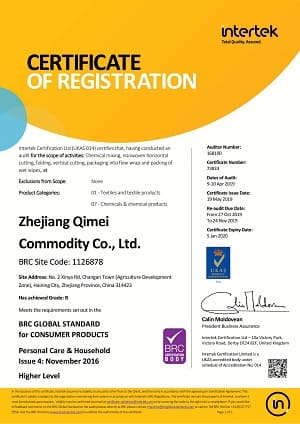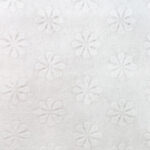Spunlace onwoven Fabric Type: Polyester,Poly -Viscose Blend material, Bamboo Fiber, Wood Pulp(Flushable), Cotton or Soy Fiber(Biodegradable)
Flat or Textured( Your Own LOGO is available)
Grammage: 30-80gsm
1/10/30/80/100/120/160 pcs/pack
Small wipes: These are typically around 4 inches by 4 inches (10 cm by 10 cm) or smaller. They may be designed for use on the face, hands, or other small areas.
Medium wipes: These are typically around 6 inches by 6 inches (15 cm by 15 cm) or larger. They may be designed for use on larger areas of the body, such as the arms, legs, or back.
Large wipes: These are typically over 10 inches by 10 inches (25 cm by 25 cm) or larger. They may be designed for use in industrial settings, for cleaning large equipment or surfaces.
1. Plastic resealable bag: This is the most common type of wet wipe packaging. It is made of plastic and has a resealable strip on top to keep the wipes fresh and moist.
2. Flip-top lid container: This type of packaging consists of a plastic container with a flip-top lid that can be opened and closed to access the wipes.
3. Soft pack with plastic flip-top lid: Similar to the flip-top lid container, this packaging comes in a soft pack and has a plastic flip-top lid for easy access.
4. Pop-up dispenser: This type of packaging features a pop-up dispensing mechanism that pulls out one wipe at a time.
5. Travel pack: A small packaging designed for on-the-go use, it often comes with a plastic snap closure.
6. Single-use packaging: These wet wipes come in small, sealed packets which are convenient for travel or outdoor activities.
7. Refill bag: This larger size packaging is designed to refill other wet wipe containers, and usually has a resealable opening.
Water: Water is typically the main ingredient in oil-free wipes, as it provides the base for the solution that is used to clean the skin.
Surfactants: Surfactants are used to break down oil and dirt on the skin, allowing it to be wiped away. Common surfactants used in oil-free wipes include sodium lauryl sulfate, sodium laureth sulfate, and cocamidopropyl betaine.
Glycerin: Glycerin is a humectant that helps to moisturize the skin and prevent it from drying out.
Preservatives: Preservatives may be added to oil-free wipes to prevent bacterial growth and prolong the shelf life of the product. Common preservatives used in cosmetic products include phenoxyethanol, methylparaben, and propylparaben.
Fragrance: Fragrance may be added to oil-free wipes to give them a pleasant scent. However, some people may be sensitive to fragrances and may prefer fragrance-free products.
Other ingredients: Other ingredients that may be included in the formulation of oil-free wipes include emollients, antioxidants, and skin-soothing agents.
ISO 9001: This certification is focused on quality management systems and is widely recognized globally. It ensures that the manufacturer has an effective quality management system in place to consistently produce high-quality products.
ISO 22716: This certification is specific to the cosmetics industry and covers good manufacturing practices (GMPs) for cosmetics products. It ensures that the manufacturer has implemented appropriate hygiene practices and quality controls to ensure the safety and effectiveness of their products.
GMP certification: This certification is also focused on ensuring that products are manufactured consistently and meet quality standards. It can be a requirement in some countries or regions.
FDA registration: If the manufacturer is selling their oil-free wipes in the United States, they may need to register with the Food and Drug Administration (FDA). This registration indicates that the manufacturer is compliant with FDA regulations for cosmetic products.
EU Cosmetics Regulation: If the manufacturer is selling their oil-free wipes in the European Union, they need to comply with the EU Cosmetics Regulation. This regulation sets out requirements for the safety, labeling, and marketing of cosmetic products within the EU.












